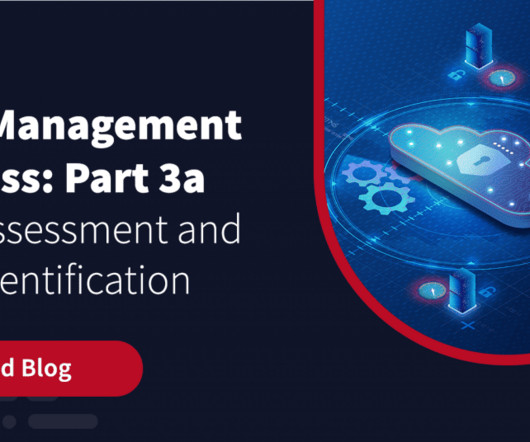Risk Management Process- Part 3a: Risk Assessment and Risk Identification
Zerto
JULY 12, 2023
Risk assessment is a key component of the risk management process that identifies and evaluates all potential risks faced by an organization. The risk assessment process also documents existing strategies and measures to mitigate risk. What Is Risk Assessment? What Is Risk Identification?




















Let's personalize your content